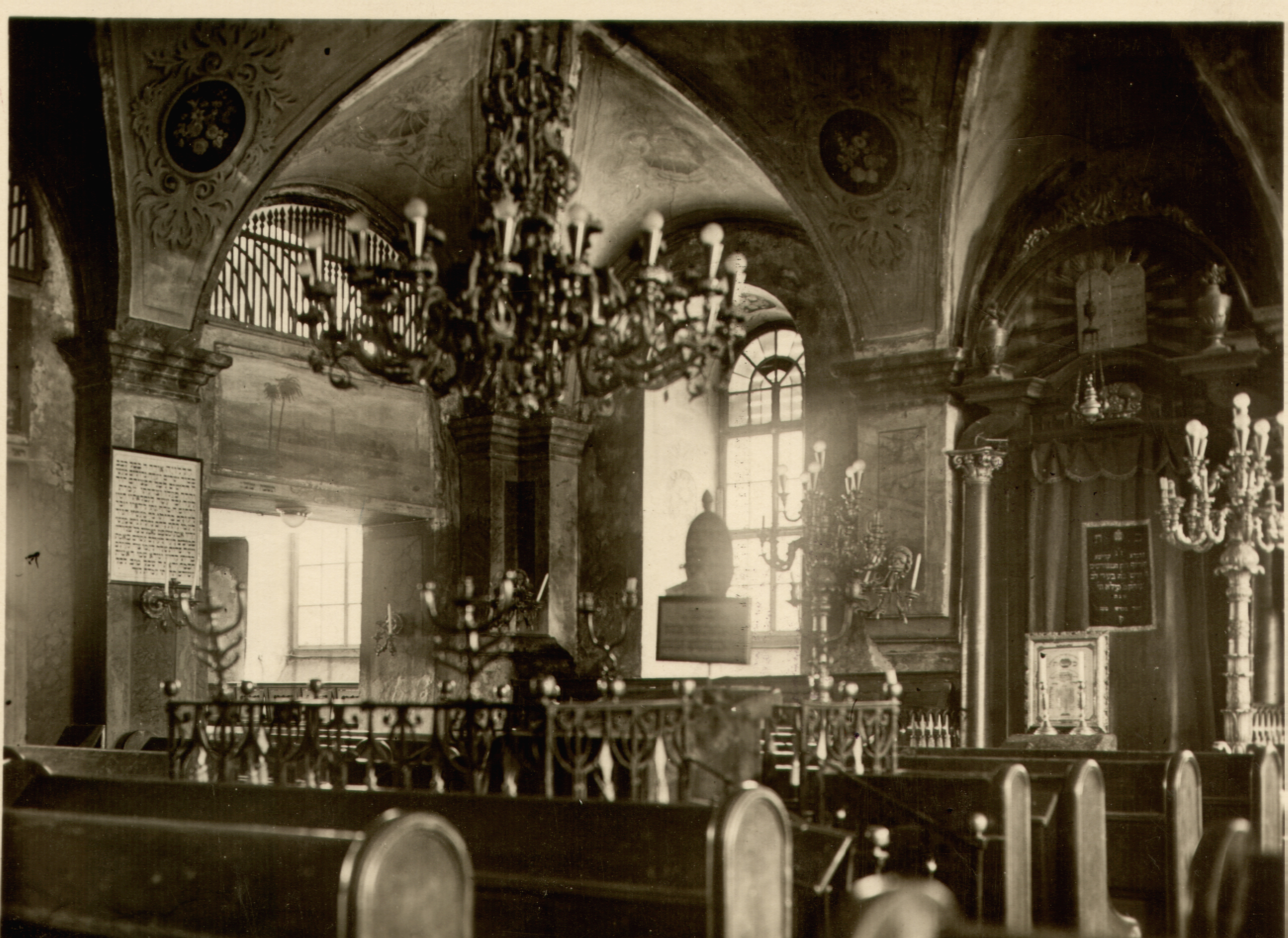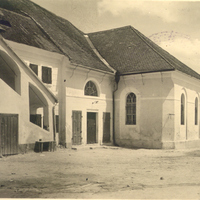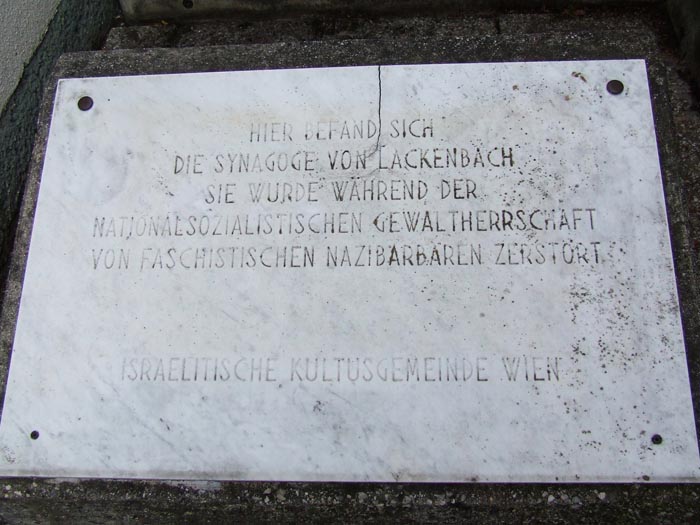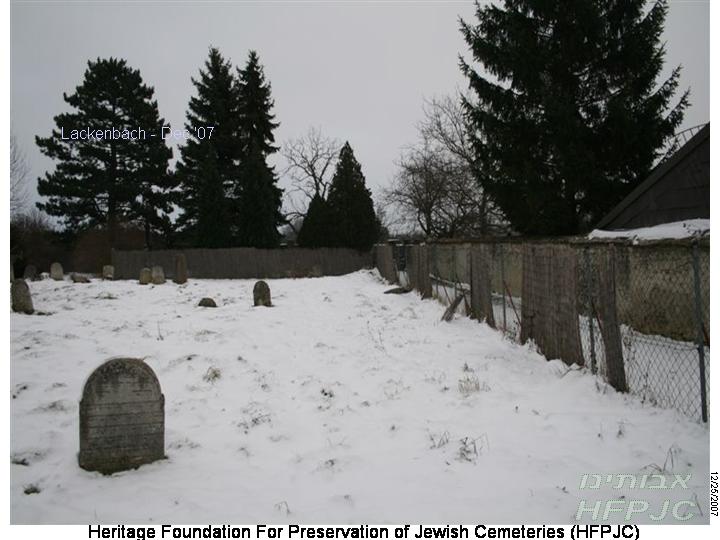 |
|
LACKENBACH
|
General History and Geography:
Lackenbach is an Austrian municipality in the
District of Oberpullendorf, Burgenland. Its Hungarian name is
Lakompak.
It is surrounded by meadows and forests and is located at
the foothills of the Ödenburg Gebirge mountain range near the
Hungarian border.
Its area is 18.1 km˛,
Elevation 313 m, Postal code 7322, Area code 02619
From 1647, Lackenbach, like the rest of Burgenland region, was administratively a part of Hungary as part of German West-Hungary, within the framework of the Habsburg monarchy.
Burgenland belonged to Hungary until 1920/21.
After the end of the First World War, the territory of German West-Hungary was given to Austria by the Treaties of St. Germain and Trianon.
Since 1921, the town has belonged to the newly founded State of Burgenland, Austria.
From 1491 the region was under the administration of Lower Austria, the communities of Burgenland were ruled by local lords, who treated them well.
In 1670/71 Jews had been expelled from Vienna by Leopold I. Many of them settled in Burgenland, where Prince Paul Esterházy accepted them.
Other Jews came from Bohemia and Moravia. In the north of Burgenland they established Seven Communities on the Esterhazy estates , communities where Jews had their own autonomous administration.
These communities were later called: "The seven (Holy) Communities" / "Sheva Hakehilot (Hakdoshot) - (שבע הקהילות (הקדושות " / "Sieben Gemeinden".
The seven communities were noted for their outstanding yeshivot and eminent rabbis.
Five communities were in Sopron Megye:
- Deutschkreutz / Nemetkeresztur / Sopronkeresztúr / Zeilem - צעלם / today Keresztúr
- Eisenstadt / Kis Marton / Asch - א"ש
- Kobersdorf / Kabold / ק"ד
- Lackenbach / Lakompak /
ל"ב
- Mattersdorf / Nagy Marton , later Mattersburg
- Frauenkirchen / Boldogasszony / פ"ק
- Kittsee / Köpcsény / קיצע
some of the families and some larger merchants spoke Slovak, Czech, Kroat or Hungarian.
The community in Lackenbach had a Synagogue, a Nikveh, a Jewish School, a Cemetery, and well developed and active Jewish community services, eg Khevra Kadisha burial society, and the club 'Zedokoh', whose role was the administration of the synagogue, the appointment of officials, and the care for visiting foreigners.
Lackenbach Destroyed Synagogue - inside (from Europeana):

Lackenbach Destroyed Synagogue - ouside (from Europeana):

Jewish population:
In 1640 there were 28 Jewish houses in Lackenbach.
In 1729 there were 45 Jewish houses.
In 1735, already 103 families, 449 Jews lived in Lackenbach!
In 1787, 581 Jews lived in Lackenbach.
In 1802 the number went down to 548.
In 1814 the number of Jews increased again to 679 and in 1836 to 753.
In 1836 there were 753 Jews in Lackenbach and in 1842 it jumped up to 1,160!
Around 1850 the Jewish population in Burgenland was 8,487, in some communities over 50% of the population.
In 1851 there were 1,200 Jews in Lackenbach, out of a total of 1,800 community members (66%!).
In 1869, 779 Jews lived in Lackenbach (approx. 62% of the total population).
In 1934, 346 Jews lived in Lackenbach (approx. 21% of the total population).
in 1938 the Jewish population in Burgenland was only 3,800. Some left to Wien or immigrated.
By the end of 1938 there were no more Jews in Lackenbach and no Jews in the whole of Burgenland,
which became the first "Jewish Free" Nazi zone in Europe.
No Jew has returned to Lackenbach after the Holocaust; those who survived immigrated mainly to Israel, USA and England.

Main source for the above is:
Historisches Ortslexikon Statistische Dokumentation zur
Bevölkerungs- und Siedlungsgeschichte
(Historical lexicon Statistical documentation to the
population and settlement history).
The Historische
Ortslexikon is a statistical documentation of the
Austrian population and settlement history and includes
information on population figures and houses. It is used
to quantitatively support demographic, historical
settlement and culturally-informative work, and offers a
wide range of data on regional and local history. The
main purpose of this documentation is the inclusion of
data from the early statistical (late 18th to mid-19th
century) and the "pre-statistical" periods in the
quantitative description of the population and
settlement history, with the classification of older
data into time series ranging up to the most recent
data.
The data collection is supplemented annually and is
available to users by means of the website of
the Österreichischen Akademie der
Wissenschaften (Institute of Demography of the
Austrian Academy of Sciences) free of charge. Data cited
are from the general source "Historisches Ortslexikon
(Angabe des Bundeslandes)" [Historical Gazetteer (of the
Federal State)], as well as specified sources for
particular details.
Information on the population status derives from
standard population censuses from 1869 to present, from
earlier censuses (ecclesiastical soul censuses, military
conscriptions, Census 1857) in the "early statistical"
period from 1754 to 1857, and from tax, manorial,
ecclesiastical or military sources in the
"pre-statistical" period.
The Editor of the Historisches Ortslexikon is
Dr. Kurt Klein, before retiring an employee (most
recently, Vice President) of the Austrian
Statistical Office (now Statistics Austria)
and a lecturer at the Institute for Economic and
Social History at the University of Vienna.
More information about the Jewish population in
Lackenbach:

Lakompak (Lakenbach, A[ustria]) An old Jewish
community, one of "The seven communities"
(Seve Kehilosz – Sheva kehilot). Documents show that there were
Jews living there already in the 16th century (See: M.Pollak -
History of the Jews of Sopron), whose numbers were greatly
increased by Jews ousted from Styria, Sopron and Vienna. In
1851, out of a population of 1800, 1200 were Jews. They did
commerce with the neighbouring Lower Austria, Styria, as well as
Sopron. The most prestigious merchants came from the Hacker
family. The community suffered a lot during the Bethlen and
Rakoczy fights*. Rabbis: Chajim Bucher around 1600, Benjamin b.
Majer As (Mhrm As), Salamon Lipschitz, Salom Ullmann (Shalom
Charif), Abraham Ullmann, David Ullmann, Moses Deutsch. (M.B.)
* Two major armed insurrections against the Habsburg rule
(Translation from Hungarian by Sarah Feuerstein)
The Jewish Cemetery
The Jewish Cemetery
is located in the centre of the town, behind the Church.
It is 9,765 m ˛ large. The oldest gravestone is from 1729.
There are 1747 known graves in the cemetery. It was active till
March 1938.
The cemetery has been cared for by the Vienna community's
Israelitische Kultusgemeinde, with the help of The Verein
Schalom association.

See more
photos in Cemetery photos
Holocaust
See in Holocaust
- Yizkor pages.
Lackenbach
today:
Lackenbach Municipality home
page
Copyright © 2009 Yohanan Loeffler